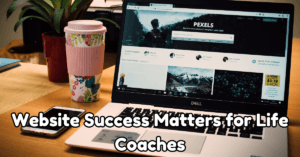
Search Site
CTRL+KSearch Site
CTRL+KPublished: 20 Aug 2024

Have you ever felt that nagging sense of self-doubt, the one that keeps you from taking the steps you know you need to achieve your goals? You’re not alone. Confidence is something many of us struggle with, but the good news is that it’s not something we’re born with—or without. Confidence is a skill that can be developed, and “The Confidence Gap” by Russ Harris offers a powerful, practical guide to doing just that. If you’re ready to bridge the gap between where you are and where you want to be, this book might just be the tool you need. Check it out here.
The “confidence gap” is a term that describes the space between where we are and where we want to be, often held back by self-doubt, fear, and inaction. Many of us are familiar with this gap—it’s that internal barrier that keeps us from going after a promotion, pursuing a passion, or even speaking up in a meeting.
But here’s the thing: confidence isn’t something you either have or don’t have. It’s something you build by taking action, even when you’re scared. This is a central theme in “The Confidence Gap,” and understanding it is the first step toward overcoming it.
Many people believe that confidence is something you either have or don’t have—an inherent trait that some are simply born with. Russ Harris debunks this myth in “The Confidence Gap” by explaining that confidence is actually a result of action, not a prerequisite for it.
Imagine a young woman named Sarah who has always dreamed of starting her own business. Every time she thinks about it, though, doubts flood her mind: “What if I fail?” “What if I’m not good enough?” Sarah waits for the day she’ll feel confident enough to take the leap, but that day never seems to come.
The truth, as Harris points out, is that if Sarah waits for confidence before she acts, she might never take that first step. Instead, if she takes small, manageable steps toward her goal—like researching her market, creating a business plan, or networking—she’ll start to build confidence along the way. The key is to act despite the fear, not in the absence of it.

One of the most liberating concepts in “The Confidence Gap” is the idea that discomfort is a natural part of growth. Often, we avoid situations that make us uncomfortable because we associate discomfort with something going wrong. However, Harris teaches that discomfort is not only normal but necessary for personal growth.
Take, for instance, James, who has always been terrified of public speaking. Whenever he’s asked to present at work, he finds a way to avoid it, thinking that successful speakers must not feel the same anxiety he does. But what if, instead of avoiding discomfort, James leaned into it? By practicing small presentations in low-pressure settings, he could start to build his tolerance for discomfort, eventually transforming it into confidence.
Harris encourages readers to embrace discomfort as a sign that they’re pushing their boundaries and growing. The more we practice sitting with discomfort, the less power it has over us, and the closer we get to closing the confidence gap.
Fear is a natural part of the human experience, especially when stepping outside of our comfort zones. However, “The Confidence Gap” emphasizes that fear doesn’t have to stop us from taking action. In fact, the more we act in the presence of fear, the more we diminish its hold over us.
Consider an example of someone like Alex, who dreams of switching careers but is paralyzed by the fear of the unknown. Every time Alex thinks about making the change, thoughts like “What if I don’t succeed?” or “What if this is the wrong decision?” flood his mind. But instead of waiting for the fear to go away, Alex could start taking small steps toward his new career—updating his resume, taking courses in his new field, or connecting with professionals already working in that industry.
By taking action, Alex would begin to realize that fear doesn’t need to disappear before he can move forward. In fact, each small step taken despite the fear builds momentum, eventually bridging the confidence gap.
“The Confidence Gap” isn’t just about theory—it’s packed with practical techniques derived from Acceptance and Commitment Therapy (ACT) that can help you build confidence and take action.
Mindfulness Practices: One of the key techniques Harris advocates is mindfulness. By staying present and observing your thoughts without judgment, you can reduce the power that negative thoughts have over you. For example, instead of letting the thought “I’m not good enough” derail your efforts, you can acknowledge it as just a thought, not a fact, and continue with your actions.
Defusion Techniques: Another powerful tool from ACT is cognitive defusion, which involves distancing yourself from unhelpful thoughts. Instead of being fused with thoughts like “I’ll never succeed,” you learn to see them for what they are—just words your mind is generating. This distance allows you to take action without being held back by self-doubt.
Values Clarification: Finally, Harris emphasizes the importance of identifying and committing to your core values. When you’re clear on what truly matters to you, it becomes easier to take action aligned with those values, even when fear is present. This alignment with your values can be a powerful motivator to close the confidence gap.
The strategies and techniques in “The Confidence Gap” aren’t just theoretical—they can have a profound impact on your life. By embracing discomfort, taking action despite fear, and using mindfulness and defusion techniques, you can begin to close the confidence gap and unlock your full potential.
Imagine waking up each day with the confidence to pursue your goals, knowing that you have the tools to handle whatever challenges come your way. Whether it’s advancing in your career, building stronger relationships, or simply feeling more at ease in your own skin, the principles in “The Confidence Gap” can help you get there.
Closing the confidence gap is not about erasing fear or discomfort—it’s about learning to act in spite of them. “The Confidence Gap” by Russ Harris offers a practical roadmap to overcoming self-doubt and building genuine confidence, one small step at a time. If you’re ready to start closing your confidence gap, consider picking up a copy of the book here.
But if you feel like you need more personalized support on this journey, you might benefit from working with a confidence coach. A coach can help you apply the principles from the book to your unique situation, providing guidance, accountability, and encouragement. Explore confidence coaching options here and take the next step toward unlocking your full potential.
Remember, confidence isn’t something you find—it’s something you create, one action at a time. So start today, and watch as the confidence gap begins to close.
No results available
Reset